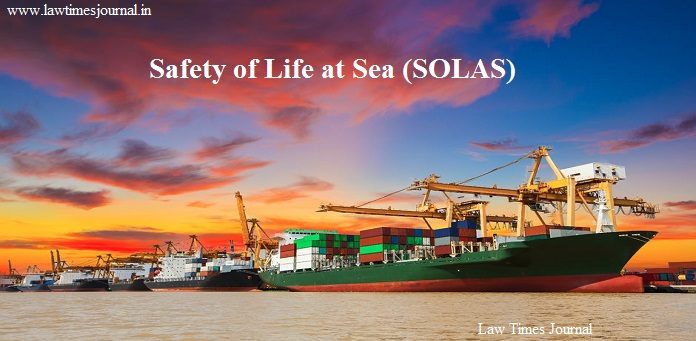
Safety of Life at Sea (SOLAS), is an international maritime treaty that requires signatory flag states to ensure that flagged vessels meet minimum safety standards for operation, equipment, and construction. It was born after the sinking of the 1914 RMS Titanic. This was never fully accepted because of the outbreak of the world war. Other versions were published in 1929 and 1948. The 1960 Convention was adopted on 17 June 1960 and entered into force on 26 May 1965. Finally, in 1974, the fifth version was highlighted and ratified by a tacit acceptance method. This meant that unless an agreed number of members objected to the agreement by a specific date, it would have been deemed to have been accepted. It entered into force on May 25, 1980. It has been updated and amended many times since then and the Convention in force today is called SOLAS 1974, as amended. It contains various chapters dealing with shipbuilding, security, cargo transport and other chapters, such as ISPS, which stands for the International Ship and Port Facility Security Code after the attacks of 11 September 2001 in the United States. The most recent Chapter of the Convention, which is chapter XIV, provides for the safety measures for ships operating in Polar Waters, which made the Polar Code mandatory as of 1 January 2017.
This treaty provides for international maritime safety for flag vessels to meet minimum safety standards with reference to the construction, equipment, and operation. The current version of the SOLAS Convention is the 1974 version which entered into force on 25 May 1980. SOLAS, 1974 has 162 Contracting States which account for approximately 99% of merchant ships worldwide in terms of gross tonnage, which is the net volume of the ship. The SOLAS Convention in its consecutive forms is usually measured to be the most vital of all international security treaties. It has 12 chapters and 2 more chapters have been added. The International Convention for the “SAFETY OF LIFE AT SEA (SOLAS)” is an intercontinental maritime treaty or convention which conveys the minimum standards in the equipment, construction and operation of ships. It was adopted in 1914 in response to the wreck of RMS Titanic; however, it did not apply to the outbreak of world wars. After the mid-1960s, it was adopted and applied on May 26, 1965. It faced recent technological developments in the marine industry.
Our modern and entirely new convention was adopted in 1974 and came into effect on May 25, 1980. Over the years, it has been amended several times with regard to technological progress and growing security concerns. For the safety of personnel and the prevention of marine pollution for the transport of goods and maritime operations on the high seas, the International Maritime Organization (IMO) presented SOLAS and MARPOL, which stands for International Convention for the Prevention of Pollution Marine Ships, to protect human life and the marine environment from all kinds of pollution. The SOLAS convention works as the Bible for the entire maritime industry and seafarers. It is a worldwide maritime treaty which sets the framework for the minimum standards in the operation, equipment, and construction of ships. Rules are established for the safety of personnel, the prevention of marine pollution, for the smooth transport of goods and for offshore shipping. It is an undeniable actuality that the SOLAS Convention in its consecutive forms is usually regarded as the most significant of all the treaties which relate to the safety and security of merchant ships. The first version was adopted in 1914, in response to the Titanic disaster, the second in 1929, the third in 1948 and the fourth in 1960. The 1974 version of the treaty or convention includes the tacit acceptance procedure, which provides that an alteration shall come into force on a particular date, until and unless, previous to that date, objections to the amendment are felt from settled number of Parties. SOLAS is literally what it means: “Safety of life at sea”. It includes all aspects of a safe ship, a safe maritime environment, and the duties of companies, individuals and member countries. It is vast and is regularly modified.
Like the International Civil Aviation Organization (ICAO), which sets guidelines and rules for the aviation sector, the IMO (International Maritime Organization) does this for the maritime/maritime industry. It is a set of standards and rules that must be followed and understood by every crew working on a ship before joining. It’s a must for everyone, regardless of rank. There are several amendments to this and divided into several chapters explaining each of the basic divisions. These are the minimum standards required aboard the ship and all ships must comply strictly This convention is formed by the International Maritime Organization (IMO), to improve safety measures during construction, use of equipment, and while operating a ship. The first SOLAS came in 1914 because of the crash of the Titanic cruise ship in 1912. In that unfortunate incident, a lot of people could have been saved though; there were enough lifeboats on either side of the ship. Many more rules and regulations were created by the committee.
Edited by Dhruval Singh
Approved & Published – Sakshi Raje





